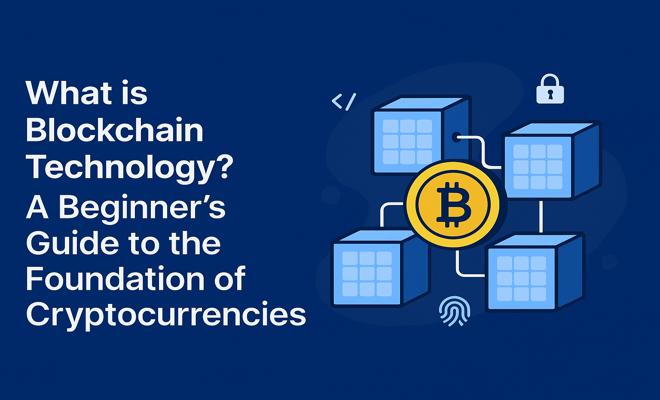
🔰 What is Blockchain Technology? A Beginner’s Guide to the Foundation of Cryptocurrencies
Introduction: Why Is Everyone Talking About Blockchain? 🧠
Over the past few years, blockchain technology has become one of the most talked-about innovations worldwide. It started by powering digital currencies like Bitcoin and now is transforming many other fields — from supply chains and healthcare to digital identity and finance. But what exactly is blockchain, and why do so many experts say it’s going to change the world? This guide breaks down the basics in a clear, simple way — no complicated jargon, just the facts.
🔗 What Is Blockchain?
Think of blockchain as a special kind of digital ledger. It keeps a permanent, shared record of transactions or data. Unlike regular databases, which are controlled by one company or person, blockchain is decentralized. This means the record is copied across many computers (called nodes) around the world. Everyone sees the same data, and changes can only happen if most of the network agrees. This system makes blockchain very secure and transparent.
🧱 How Does Blockchain Work?
Here’s a simple explanation of how blockchain operates:
- Blocks: Data is grouped together into blocks. Each block holds a list of transactions or information.
- Hashing: Every block is linked to the one before it using a unique digital fingerprint called a hash. This creates a chain of blocks — hence the name "blockchain."
- Consensus: Before a new block is added, the network participants (nodes) must agree that the block’s data is valid. They use special rules called consensus mechanisms like Proof of Work or Proof of Stake to do this.
Once a block is added to the chain, its data cannot be changed without changing every block that comes after it — which is practically impossible. This feature helps protect against fraud and keeps the data trustworthy.
🕵️♂️ Public vs. Private Blockchains
There are two main types of blockchain networks, each with different features:
- Public Blockchains: Open for anyone to join and use. Examples include Bitcoin and Ethereum. Anyone can read or write data, but changes require agreement from most participants.
- Private Blockchains: Controlled by a single organization or group. These blockchains are faster and easier to manage but are less decentralized.
✅ Benefits of Blockchain Technology
Blockchain offers many advantages that are changing how businesses and people interact:
- Decentralization: No single person or company controls the data, reducing risks of failure or manipulation.
- Transparency: Everyone on the network can see the same information, which increases trust.
- Security: Advanced cryptography protects data from being tampered with or hacked.
- Efficiency: Automates processes such as payments and audits, saving time and money.
- Trust: Builds confidence between participants without needing middlemen like banks or brokers.
🌍 Real-World Uses of Blockchain
Beyond cryptocurrencies, blockchain is making waves in many fields:
- Supply Chain Management: Tracking products from origin to store, ensuring authenticity and reducing fraud.
- Healthcare: Securely storing and sharing patient records with doctors and hospitals.
- Voting Systems: Creating transparent and tamper-proof elections.
- NFTs & Digital Art: Proving ownership of digital creations.
- Decentralized Finance (DeFi): Offering financial services like lending and borrowing without traditional banks.
⚠️ Challenges and Limitations
While blockchain is promising, it also faces some hurdles:
- Scalability: Handling large numbers of transactions quickly can be difficult.
- Energy Consumption: Some systems, like Bitcoin’s Proof of Work, use a lot of electricity.
- Complexity: The technology can be hard for beginners to understand and use.
- Regulations: Laws around blockchain and cryptocurrencies are still developing and can be unclear.
📈 Blockchain and the Future of Finance
Blockchain is changing traditional finance by enabling peer-to-peer transactions, cutting out middlemen, and creating new financial models such as DeFi. Many experts believe blockchain will play a major role in the global digital economy for years to come.
🧠 Final Thoughts for Beginners
Although blockchain can seem complicated at first, it is simply a smart way to create trust and security online. Whether you want to invest in cryptocurrencies, build new apps, or just understand the technology shaping the future, learning about blockchain is a great step forward.
📘 Glossary of Key Terms
- Block
- A container that holds data or transactions in the blockchain.
- Hash
- A unique digital fingerprint that links one block to another securely.
- Consensus Mechanism
- A method used by the network to agree on which data is valid.
- Node
- A computer that helps maintain the blockchain network by validating and sharing data.
- Smart Contract
- Computer programs that automatically execute agreements stored on the blockchain.